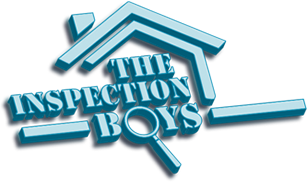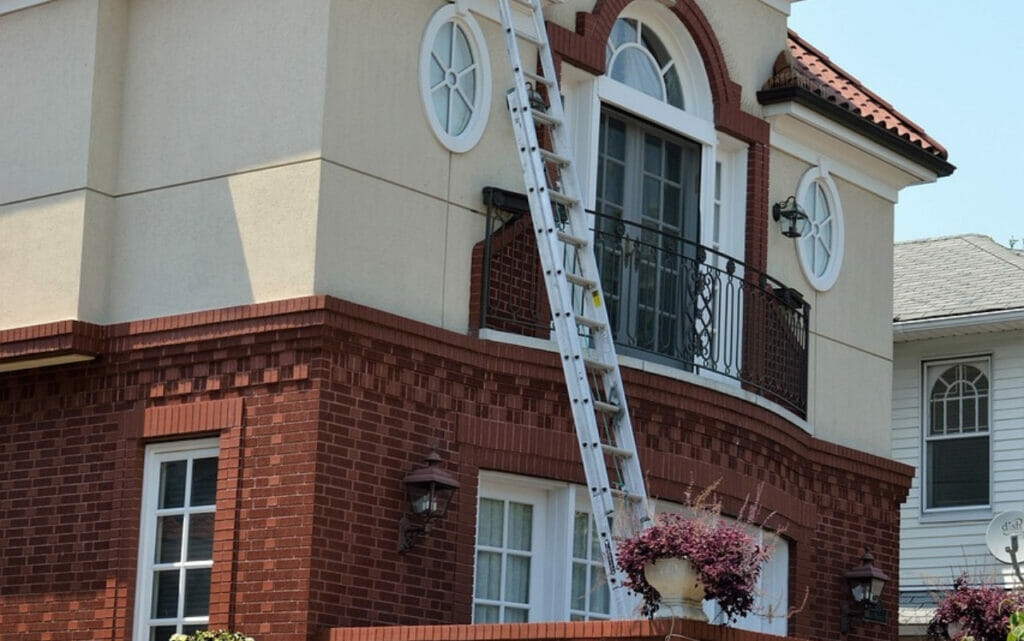When it comes to buying or selling a home, a thorough home inspection is a critical step in the process. A comprehensive inspection provides invaluable insights into the condition of the property, helping buyers make informed decisions and sellers identify potential issues before listing. In this article, we will delve into the various aspects of a thorough home inspection, from the foundation to the rooftop, highlighting the importance of each step along the way.
The Anatomy of a Thorough Home Inspection
Pre-Inspection Preparation
Before the actual home inspection takes place, there are several crucial steps that need to be taken to ensure a smooth and effective process.
- Scheduling the Inspection: It’s important to schedule the inspection with a reputable and qualified home inspector. Take the time to research and select an inspector who has the necessary certifications, experience, and expertise in conducting thorough home inspections. Consider asking for recommendations from real estate agents, friends, or family members who have recently gone through the home buying or selling process.
- Gathering Necessary Documents and Information: To assist the inspector in understanding the history and maintenance of the property, gather relevant documents such as building permits, renovation records, and warranties. These documents can provide insights into any upgrades, repairs, or additions made to the property over the years. Additionally, providing maintenance records for major systems and appliances can help the inspector understand their current condition.
- Clearing Access to all Areas of the Property: Ensure that the inspector has unobstructed access to all areas of the property. This includes removing any personal belongings, furniture, or storage items that may block access to critical areas such as the attic, crawl spaces, electrical panels, or utility rooms. Clearing these spaces allows the inspector to thoroughly examine and evaluate the property’s key components.
- Prepare a List of Concerns or Questions: If you have specific concerns about the property, it’s helpful to compile a list of questions or areas of interest that you would like the inspector to address during the inspection. This can include concerns about previous water damage, potential structural issues, or specific systems or appliances that you want to be thoroughly evaluated. Sharing your concerns with the inspector beforehand ensures that they can pay close attention to those areas and provide you with detailed insights.
By taking these pre-inspection preparation steps, you can help facilitate a more efficient and productive home inspection. It allows the inspector to have the necessary information and access to evaluate the property thoroughly, ensuring that no significant issues go unnoticed. Remember, open communication with the inspector and providing any relevant documentation can contribute to a comprehensive assessment of the property’s condition.
Exterior Inspection
During a thorough home inspection, the exterior of the property is carefully examined to assess its condition, structural integrity, and overall maintenance.
Here are the key aspects that are evaluated during the exterior inspection:
- Foundation and Structure: The inspector will inspect the foundation for any signs of cracks, shifting, or settling. They will look for unevenness or sagging in the structure and identify any visible damage to the exterior walls, such as bulges or separations. These assessments help determine the stability and structural soundness of the property.
- Roof, Gutters, and Downspouts: The roof is thoroughly examined to check for signs of damage, leaks, or missing shingles. The inspector will assess the condition of the roof covering, including the integrity of flashing, vents, and chimneys. The gutters and downspouts are inspected to ensure they are properly installed and effectively directing water away from the property, preventing potential water damage.
- Siding, Windows, Doors, and Exterior Features: The inspector will evaluate the siding material (e.g., brick, stucco, wood, vinyl) for any visible damage, cracks, or signs of deterioration. Windows and doors are inspected to ensure they are properly installed, operate smoothly, and provide adequate insulation. Exterior features, such as decks, patios, balconies, and porches, are assessed for their structural stability, safety, and overall condition.
- Grading and Drainage: The grading of the property’s landscape is evaluated to ensure that it slopes away from the foundation, promoting proper drainage. The inspector will look for signs of water pooling near the foundation, which can lead to moisture-related issues. Adequate drainage systems, including French drains or swales, will be assessed for their effectiveness in diverting water away from the property.
- Exterior Ventilation and Vent Covers: The inspector will check the exterior ventilation systems, such as attic vents, to ensure proper airflow and ventilation. They will also inspect the vent covers for the exhaust systems, including for dryers, bathrooms, and kitchen range hoods, to ensure they are functioning correctly and adequately expelling moisture and odors.
In addition to the above aspects, here are a few more details regarding the exterior inspection:
Exterior Paint or Finish: The inspector will assess the condition of the exterior paint or finish. They will look for signs of peeling, cracking, or fading, which may indicate the need for repainting or refinishing. Properly maintained and intact paint or finish helps protect the underlying materials from weather damage.
Outdoor Structures: If there are any outdoor structures, such as sheds, garages, or fences, they will be inspected for their structural integrity, condition, and compliance with local building codes. The inspector will check for signs of rot, decay, or damage that could compromise their stability or safety.
Driveways, Walkways, and Patios: The condition of driveways, walkways, and patios will be evaluated. The inspector will look for cracks, unevenness, or damage that may pose a tripping hazard or require repairs. Properly maintained surfaces contribute to the overall safety and aesthetics of the property.
Landscaping and Drainage: The inspector will observe the landscaping elements, such as trees, shrubs, and flower beds, assessing their proximity to the property and any potential impact on the foundation or structure. They will also evaluate the effectiveness of drainage systems, including surface grading and the presence of drainage features, to ensure that water is appropriately directed away from the property.
Exterior Lighting and Electrical Outlets: The inspector will inspect the exterior lighting fixtures, ensuring they are functional and properly installed. They will also check the placement and condition of outdoor electrical outlets for safety and compliance with electrical codes.
Pool and Spa (If Applicable): If the property has a pool or spa, the inspector will evaluate their condition, including the pool structure, equipment, and safety features. They will check for proper fencing, functioning pool pumps, filters, and any visible signs of damage or leaks.
Overall, the exterior inspection provides valuable insights into the condition, maintenance, and potential issues related to the property’s exterior components.
Interior Inspection
The interior of the property is meticulously examined to assess its overall condition, safety, and functionality during a thorough home inspection.
Here are the key aspects that are evaluated during the interior inspection:
- Walls, Ceilings, and Floors: The inspector will carefully examine the walls, looking for any visible damage, cracks, or signs of moisture intrusion. They will assess the condition of the ceilings for evidence of leaks, water stains, or sagging. Additionally, the floors will be inspected for any unevenness, damage, or signs of structural issues.
- Electrical System: The inspector will assess the electrical system to ensure it is safe and up to code. This includes checking the functionality of outlets, switches, and light fixtures throughout the property. The electrical panel will be inspected for proper wiring, appropriate circuit breakers, and signs of overheating or other hazards.
- Plumbing System: The plumbing system will be evaluated to check for leaks, water pressure, and proper drainage. The inspector will examine sinks, toilets, showers, and tubs for any visible leaks or damage. They will also inspect exposed pipes, shut-off valves, and water heaters for signs of corrosion or other issues.
- HVAC System: The heating, ventilation, and air conditioning (HVAC) system will be inspected to ensure proper functioning and maintenance. The inspector will assess the age and condition of the furnace, air conditioning unit, and ventilation components. They will also check air filters, ductwork, and thermostat operation.
- Windows and Doors: The inspector will examine windows and doors for proper installation, functionality, and insulation. They will check for any visible damage, signs of air leakage, or condensation issues. Locks, latches, and weatherstripping will also be evaluated for security and energy efficiency.
- Insulation and Ventilation: The inspector will assess the insulation levels in the walls, attic, and crawl spaces. They will evaluate the effectiveness of insulation in maintaining energy efficiency and preventing moisture-related issues. Ventilation systems, including bathroom and kitchen exhaust fans, will also be inspected for proper operation.
- Safety Features: The presence and functionality of safety features will be examined, such as smoke detectors, carbon monoxide detectors, and fire extinguishers. The inspector will ensure that these devices are properly installed and in working order to ensure the safety of occupants.
- Appliances: If applicable, the inspector will evaluate the condition and operation of major appliances such as stoves, ovens, refrigerators, dishwashers, and laundry machines. They will check for proper installation, functionality, and any visible signs of damage or malfunction.
By thoroughly inspecting the interior of the property, the inspector can identify potential issues related to the structure, electrical and plumbing systems, HVAC, and overall safety.
Structural Components
The inspector will pay close attention to the attic, basement, or crawl spaces. These areas provide crucial insights into the condition of the property’s structural components. The inspector will look for signs of water damage, leaks, or mold growth, which could indicate underlying issues. Any visible damage to the foundation, beams, or supports will be noted.
Mechanical Systems
The functionality of mechanical systems plays a significant role in the overall livability of a home. The inspector will evaluate the electrical system’s performance, ensuring that outlets, switches, and fixtures are in proper working order and that there are no safety hazards present. The plumbing system, including supply lines and drains, will be checked for leaks, clogs, or other plumbing-related issues. The inspector will also assess the heating, cooling, and ventilation systems to determine if they are functioning correctly and whether they require maintenance or repair.
Appliance and Fixture Inspection
In addition to the overall assessment of the property, the inspector will evaluate the condition and functionality of various appliances and fixtures. This includes kitchen appliances such as stoves, refrigerators, and dishwashers. Bathroom fixtures, including toilets, sinks, and showers, will be inspected for proper operation and potential leaks. If applicable, laundry appliances will also be examined.
Documentation and Reporting
Throughout the inspection process, the inspector will take detailed notes and photographs to document their findings. After completing the inspection, a comprehensive report will be prepared, outlining the inspection results, including any identified issues or areas requiring further attention. This report will be provided to the client or relevant parties involved in the transaction, allowing them to make informed decisions about the property.
From foundation to rooftop, a thorough home inspection is an essential step in any real estate transaction. It provides a comprehensive assessment of the property’s condition, helping buyers and sellers identify potential issues, negotiate repairs, or adjust the listing price accordingly. By prioritizing a thorough home inspection, homeowners can ensure the safety, functionality, and longevity of their investment. Remember, the expertise of a qualified professional can make all the difference in uncovering hidden problems and providing peace of mind for all parties involved.

